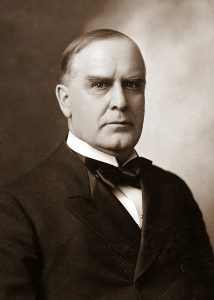Artha Woods, who died Monday, once burst into Mayor Dennis Kucinich’s office, got him to cancel a meeting and took him to see hookers hawking their wares in her ward.
She also traced some of the customers’ car registration tags and called their homes.
Woods longtime councilwoman and council clerk, died at McGregor at Overlook after a long illness. Different public records put her age at 94, 90, 88 and younger.
She broke the color line at Ohio Bell, managed boxers, ran a racially pioneering modeling school, mentored Jayne Kennedy and other stars and led local and national civic groups.
The slim, tall woman was known as “Lady Artha.”
“She was a great woman,” said her companion, Stanley Tolliver, former Cleveland school board member.
“She was a convergence of formality, professionalism and street smarts,” said long-time Councilman Jay Westbrook.
“She was always trying to advance black women,” said Councilman Ken Johnson.
Woods often denounced sexism and racism. In 1985, blasting police neglect of her East Side ward, she said, “This is getting to be a prime area, and I’m beginning to wonder if they don’t want black people living in the area.”
Yet she reached out to all races, especially after beating Councilman John Lawson for a new Ward 6, combining her old Fairfax ward with his University Circle one. She was named an honorary Italian at Holy Rosary Church and blessed by Pope Paul VI in Rome for her work with Catholic leaders.
She was born Artha Mae Bugg in Atlanta and had four younger siblings. The family moved to Cleveland before she started kindergarten. She became valedictorian of Central High School and won a district award as a top Latin student. She was raised as a Seventh-Day Adventist, without shows or dances. She later joined Antioch Baptist Church near her long-time home on E. 89th St.
Woods attended Western Reserve School of Education and took courses elsewhere in shorthand, modeling, sewing and more.
After public protests for diversity, Ohio Bell hired her and 18 other blacks in 1941. All the black women operated elevators at headquarters on Huron Rd. Black women had to sit at a separate table from white women in the cafeteria. She started boycotting the room.
She rose during 40 years at Ohio Bell and retired as public relations manager. Along the way, she led civic projects for the company, including “Reaction Line,” a program with Parent-Teacher Associations for city schools. Woods also managed two boxers and sewed rhinestone robes for them. She owned Cedar Ave. Millinery Shop and sold hats to Dorothy Fuldheim, Billie Holliday and Zelma George.
She had trouble finding black models. With partner Jon McCullough from Ohio Bell, she founded Artha-Jon Academy of Modeling and Charm at her E. 89th St. home, one of the nation’s first such schools for black women.
She ran the school for 30 years and passed it on to a granddaughter. She formed a foundation to teach the underprivileged for free. She also created a pioneering charm course for clients of the Cleveland Society for the Blind
She edited “International Image” for the Modeling Association of America International and became the group’s first black president in 1978. She and McCullough were inducted to the Models Hall of Fame.
Woods founded the Fairfax Area Community Congress, donated its building and created its Starlight Cotillion for female graduates of nearby public high schools.
“These young women deserve a moment in the spotlight,” she told The Plain Dealer in 1990.
Woods was also president of the Champs scholarship organization, the Booth-Talbert Clinic and Day Care Center Auxiliary and the Business and Professional Women’s Club. She belonged to the Cuyahoga County Democratic Executive Committee. She was second vice chairperson of the Metropolitan Health Planning Corp. and second vice president of the Urban League. She was a convenor of the National Black Caucus of Girl Scouts of America.
In 1977, she ran in Ward 18 against incumbent Councilman James Boyd, convicted of bribery inJuly. A few days before the election, he was jailed and removed from office. She was appointed to the seat, then won a full term at the polls.
On council, Woods helped the Cleveland Clinic and Cleveland Playhouse expand and pressed for minority contractors. To fight graffiti, she proposed registering buyers of spray paint. She also fought for improvements at the public Woodhill Homes.
“Very little is being done for you,” she once told Woodhill tenants. “Instead, they’re doing it to you.”
In 1981, she won the merged Ward 6. Nine years later, she stopped serving on council and started serving it as clerk. Westbrook, then a new council president, said, “She was an invaluable part of the team that moved us forward.” She oversaw renovations of council offices, put the city’s dormant consumer affairs department under council’s wing, and got the office’s first fax machine.
Among many hobbies, Woods liked to sew, swim, landscape, watch sports and raise German shepherds. She built a heated swimming pool and brick doghouse at her home. She won a landscaping commendation from Governor John Gilligan. Among many other honors, Artha Woods Street and Artha Woods Park are named for her.
Woods outlived her two children, one of them killed by gunfire at age 24.
She once said, “There was always rebellion in me, but I rebelled in a productive way, even in the face of blatant segregation.”
Artha Mae Woods
Survivors: two granddaugh ters, Gaile Ozanne of Pepper Pike and Deborah Enty of Cleveland; and six great-grandchildren.
Arrangements: E.F. Boyd & Son
Funeral: pending

